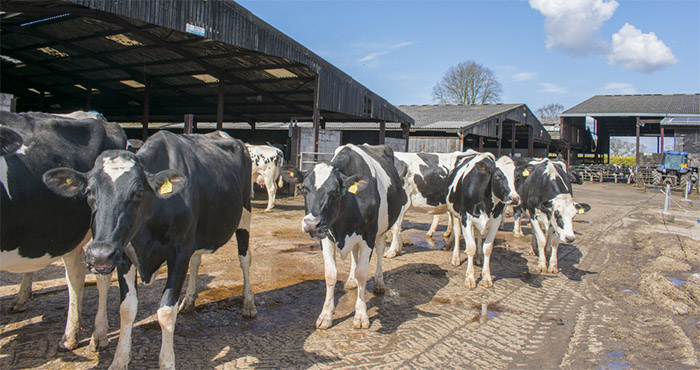Mole Valley Farmers has announced that it is incorporating methane output into its Precision Nutrition ration programme to give farmers a greater understanding of how different diets impact on the environment.
Launching at today’s Dairy-Tech event at Stoneleigh Park, the company’s rationing software will now predict the grams of methane/cow/day and grams of methane/litre that a specific ration is likely to produce, based on its nutrient profile. This is calculated using an equation which has been carefully selected from peer reviewed literature to complement UK dairy systems.
The decision to look at methane in detail follows research carried out by Harper Adams University in conjunction with Mole Valley Farmers. The work looked at methane output on different diets and found that rations based on maize silage and starch reduced daily methane emissions by about 7%, compared to grass silage and higher fibre diets.
Agriculture – and particularly livestock production ^ is under increasing pressure to reduce its environmental impact. Currently, greenhouse gas (GHG) emissions from UK farms account for about 10% of total UK GHG emissions. Within dairy farming, nearly 40% of emissions are from methane produced as a consequence of ruminant fermentation.
With the NFU setting a target for farming to become net zero by 2040, having the tools in place to understand farming’s true impact on the environment is essential, said Mole Valley Feed Solutions’ technical manager, Dr Matt Witt.
“Although there’s currently no penalty or reward for producing more or less methane, it’s likely these parameters will become more important in terms or milk payments, support payments or both. We want to be prepared for that,” he said.
“We want to try and put a bit of realism into the debate around cows and the environment. Having figures on methane will allow us to benchmark so we are in a better position to help farmers plan for the future. We’ll start to get a feel for what the numbers look like, how they are influenced by diet and how they link to other key drivers of profitability.”


